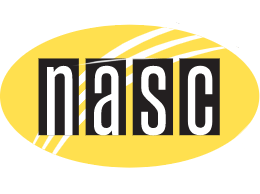Can Dogs Eat Pork Bones?

Give a dog a bone, or so the saying goes. But before you toss a pork bone your dog’s way, make sure it’s a safe one. Keep reading to find out what kinds of bones are safe for dogs, and how to choose the right pork bone.
First, here’s some general background on bones for dogs.
Are Bones Good For Dogs?
Yes, bones are great for dogs. But only raw bones. Don’t ever give your dog cooked bones, as they can splinter and cause your dog injury.
Here are 5 benefits of giving raw bones to dogs:
- Bones are a great source of minerals your dog needs for proper muscle function, like magnesium, phosphorous, and calcium.
- Raw meaty bones are a great source of fat and protein, two of the three macronutrients your dog needs for calories.
- Chewing bones improves oral health. It stimulates the production of enzymes in your dog’s saliva, which helps remove tartar, keeps plaque from building up on teeth, and keeps gum disease at bay.
- Chewing on a bone exercises your dog’s neck and spine muscles and makes them stronger.
- Gnawing on a bone can keep your dog busy … he can be happily occupied for hours.
But remember, not all bones are safe for dogs! Here are some tips to consider when choosing a bone for your dog:
What Kinds of Pork Bones Are Safe for Dogs?
There are two main types of pork bones to give your dog.
1. Raw meaty bones are bones he can chew up and completely swallow … and they’re an important part of his raw diet.
2. Recreational bones are larger bones that he won’t be able to completely chew and swallow. Their purpose is to provide him with entertainment and exercise. And they’re great at helping keep your dog’s teeth clean and healthy.
Here are a few guidelines.
- Give your dog raw, meaty bones as part of his meals. These are softer bones that he can chew up and completely swallow to provide all the nutrients from the meat and bone. Choose meaty bones with small bones and joints. Necks, tails, and feet are great.
- For recreational chewing, choose flat bones over long, weight-bearing bones. Flat bones are softer, which is easier on your dog’s teeth. They also contain less marrow, which is very rich and can give your dog loose stools. Flat bones come from places like the spine, ribs, pelvis and shoulder. Long bones are from legs and wings.
- Buy bones from young, organically raised grass-fed animals if you can.
- Too much bone can cause constipation. You’ll know if your dog has had too much bone if his stool looks powdery white and crumbly. Then it’s time to cut back.
What Pork Bones Are Not Safe for Dogs?
Here are some types of bones that it’s safer to avoid for your dog.
Chunks Of Bone Or Pork Bones With Sharp Edges
Pork bones with straight sharp edges or smaller pieces can cut your dog’s digestive tract or get stuck, causing a blockage or choking hazard. Your dog should not be able to swallow whole pieces of bone. Beware of pork bones that have been sawn up, because they’ll have straight edges that can get caught in your dog’s esophagus. Pork chop bones or pork neck bones are good examples of bones that often have straight edges.
Caution: If your dog was eating a bone and then shows signs of bloating, hunched posture, or strained attempts to vomit or poop, he may have a blockage. Blood in the stools may also be a sign of damage to the digestive tract. These symptoms can be signs of an emergency situation that needs a trip to the vet!
Cooked Bones
Always feed raw pork bones and never give your dog cooked pork bones. This includes smoked bones that are often sold in pet stores. Cooking causes bones to dry out, so they’re more likely to splinter and create sharp edges or dangerous bone fragments. It may be tempting to give your dog those leftover barbecued pork rib bones from your plate … but don’t!
Weight-Bearing Bones
Weight-bearing bones are larger, harder bones such as the femur. Lots of dog owners give them, but there’s more risk of your dog breaking a tooth with these bones. Pork femur bones do have lots of healthy cartilage on the ends, which is great for your dog’s joint health … but be aware they are harder on his teeth.
Old Bones
As bones dry, they get more brittle, which means they’ll break and splinter into sharp pieces more easily. It’s safest to throw away any bone when you notice it gets too dry – even if your dog’s been saving it for a special occasion!
Bones From Older Animals
The older an animal is, the more time there has been for toxins to accumulate in the bones. Try to buy pork bones that come from younger animals.
Now that you have some basic information about bones, it’s time for some details about pork bones.
Are Pork Bones Good For Dogs?
Pork bones can be a good addition to your dog’s diet … both as a source of raw meaty bones and as recreational bones. Pork rib bones and pigtails are good raw meaty bones. For recreational bones, large bones like pork shoulder bone, pelvic bones or necks will provide plenty of chewing and teeth-cleaning fun for your dog.
Caution: If you give pork necks, make sure they’re whole or in big pieces. Many ethnic stores sell pork neck bones cut or sawn into smaller pieces, leaving them with straight, sharp edges your dog can choke on, as mentioned earlier.
How To Choose Pork Bones For Dogs
Pork is safe for dogs, but here are a few things you need to know before you shop for pork bones for your dog. These are some reasons to feed your dog pork in moderation.
Bones From Pastured Pigs Are Best
If you can, buy your raw pork bones (and meat) from pastured animals. That’s because pastured pigs are healthier … and healthier for your dog.
Note: Don’t look for “grass-fed pork.” Pigs thrive on an onmivorous diet. They’ll eat some grass and other plants along the way, but there’s no such thing as a grass-fed pig.
Pastured pigs forage for plants, roots, bugs and nuts. This means they absorb a lot of natural nutrients from the soil. They also eat other foods the farmer gives them, including vegetables and fruit. And pigs who live outdoors get vitamin D from sunshine.
Ethically raised animals lead happier lives! So you can feel good that your dog’s bones come from animals that lived good lives and weren’t crammed into tiny pens or cages to get fat.
Find a local pig farmer or visit farmers’ markets for the best sources of healthy pork bones for your dog.
Avoid Factory-Farmed Pork Bones
Factory farmed pigs live indoors on concrete floors, in conditions where they can barely move. They feed foods like GMO corn and soybeans grown with chemical fertilizers. And they’re given antibiotics to prevent infections that are common due to overcrowded living conditions.
So these are the foods your dog is getting second-hand when he eats factory-farmed pork bones or meat. The meat and bones from these animals are much less healthy and nutritious for your dog, One example of this is the kind of fat in pork.
Fat Content In Pork
One drawback of feeding your dog pork is the fat content. There’s a lot of visible fat in pork meat and you may see it around the pork bones you give your dog. The good news about pork fat is it’s mostly on the outside … and the meat itself is quite lean. So it’s a good idea to trim the visible fat from any pork bones you give your dog.
Omega Fatty Acids In Pork
Pork doesn’t have an ideal omega fatty acid profile. Most store-bought pork has a 24:1 ratio of omega-6 to omega 3 fatty acids. A healthy ratio should be closer to 5:1. So it’s really hard to give enough omega’3 oils to make up for that shortfall.
Too much omega-6 can cause inflammation in your dog that can contribute to chronic disease and early aging.
But pastured pig meat is much better. Studies show pastured pig meat is 18 to 43% higher in omega-3 fatty acids. And if you can buy organic, that’s 291% higher. So choose organic pork bones from pastured pigs if you can find them.
RELATED: Why your dog needs omega-3 fatty acids …
Should You Worry About Disease In Pork Bones?
People worry about parasitic diseases like trichinosis in raw pork. The truth is that trichinosis (from the parasite Trichinella spiralis) is extremely rare nowadays. Pigs can carry other parasites like roundworms or hookworms. But the risk of any kind of diseased meat or bones is much higher in factory-farmed meats. So that’s another good reason to buy pork bones from healthy, pasture-raised animals,
You can reduce the risk of parasites in pork bones by freezing them before giving them to your dog. Ideally, freeze them for 20 days at 5 degrees Fahrenheit, or 3 days at minus 4 degrees Fahrenheit.
Supervise Your Dog With Bones
Any time you give your dog bones, don’t leave him alone. Any bone can be a choking hazard for your dog. So make sure someone’s always home to keep an eye on your dog with his bone.
Next time you’re planning to have pork chops for dinner, remember to pick up a bone for your dog too! Keep the tips for choosing a safe bone in mind.
References
Srednicka-Tober, D. et al. Composition differences between organic and conventional meat: a systematic literature review and meta-analysis. British Journal of Nutrition. 2016 March; 115(6): 994-1011.
Find us in a store near you
Never miss out
Need help? Chat with us





